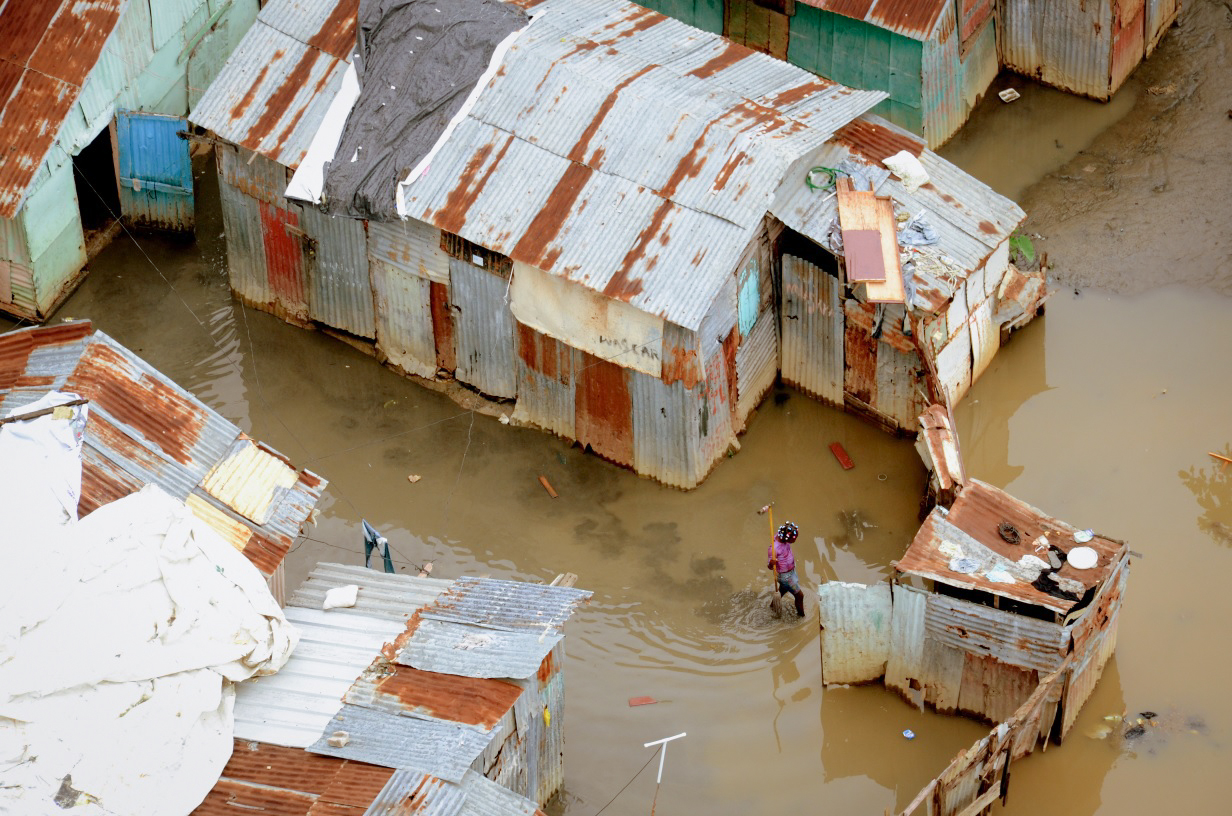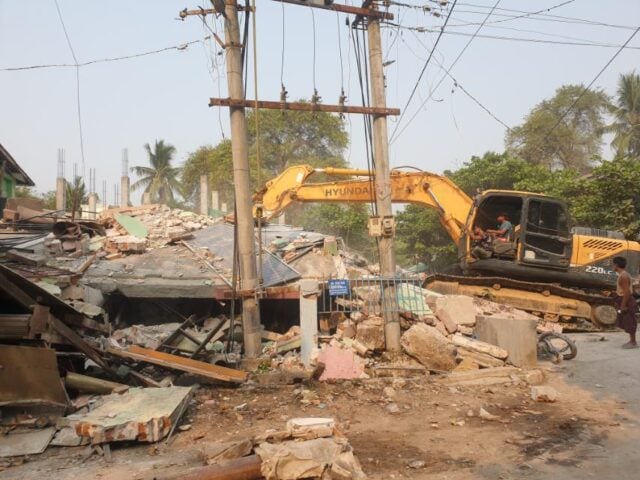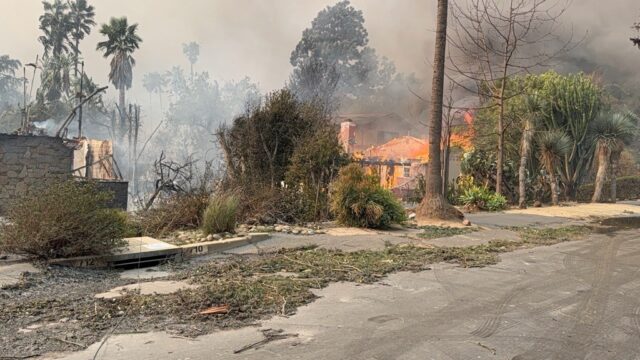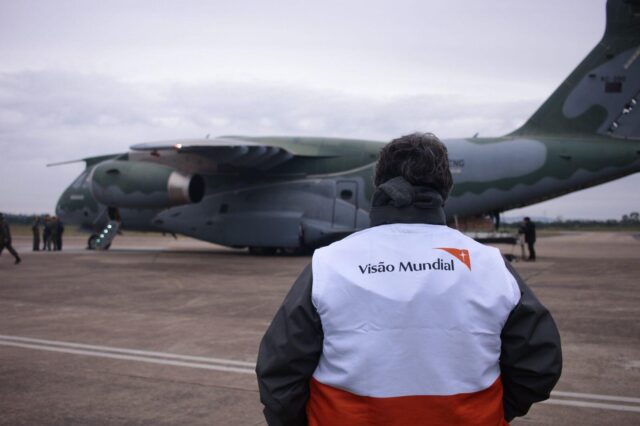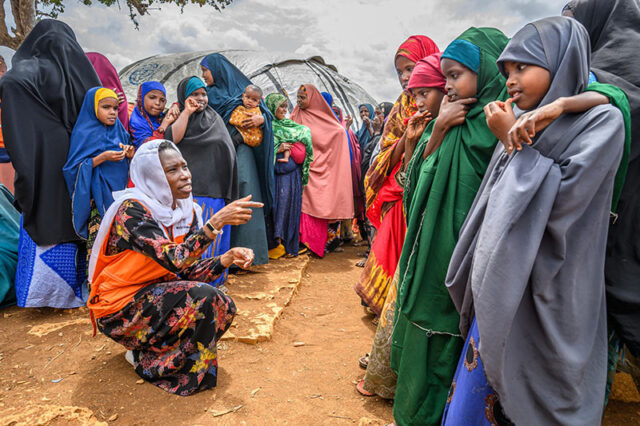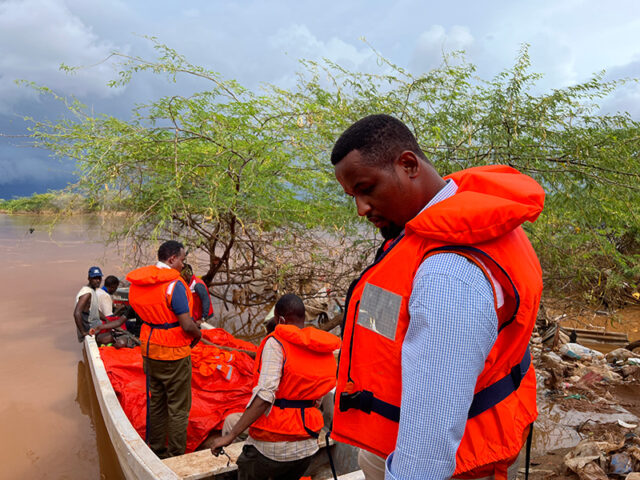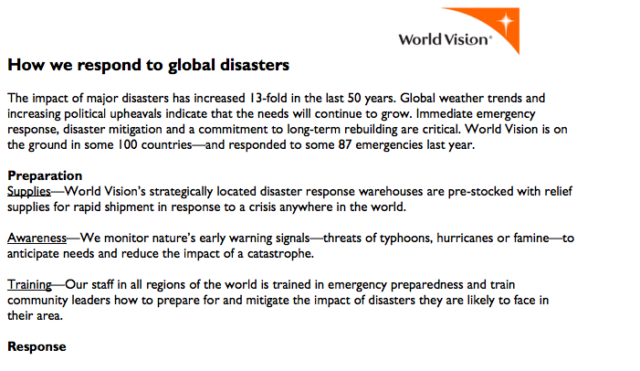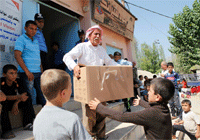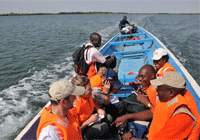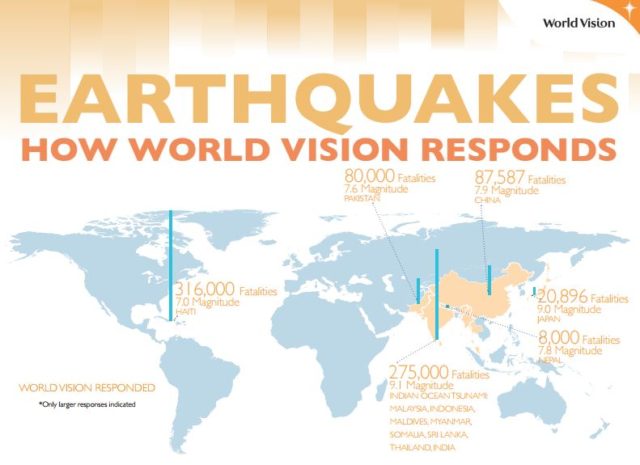The Latest
On March 28, 2025, a massive 7.7 magnitude earthquake hit central Myanmar near Mandalay, leaving behind widespread devastation and collapsed buildings, as seen in this image. (© 2025 World Vision) MANDALAY (April 1, 2025) – Christian humanitarian organization World Vision has issued an urgent...
World Vision responds to devastating Myanmar earthquake
A powerful 7.7 magnitude earthquake rocked central Myanmar near Mandalay, on March 28, 2025, toppling buildings and causing widespread destruction, as seen here. (© 2025 World Vision/photo by Swe Nyein) YANGON (March 28, 2025) Global Christian humanitarian agency World Vision is responding in the...
World Vision responds to Los Angeles wildfires with urgently needed relief supplies
Highlights World Vision is coordinating with L.A.-area partners, including local churches, to deliver the relief supplies to affected families, and is preparing to provide additional support as needed. Homes destroyed by wildfires in Los Angeles. World Vision 2025. SEATTLE (January 9, 2025) — Christian...
World Vision highlights 2024’s most devastating humanitarian crises
Highlights “Throughout my travels this year, I have seen children surviving in some of the hardest conditions I have ever seen,” says Edgar Sandoval, president and CEO of World Vision. In Ethiopia, World Vision staff deliver clean water to communities affected by drought.( ©2024...
Highlights Over half the population of Sudan (25.6 million people) is facing crisis or worse conditions of food insecurity (IPC Phase 3 or above) between June and September of this year 8.5 million people (18% of the population) are facing high levels of acute...
Highlights Immediate needs include clean water, food, shelter supplies, blankets, mosquito nets and sanitation facilities and hygiene kits to help prevent disease outbreaks. A coordinated international response is crucial to provide essential supplies and ensure the safety of surviving children and families. PORT MORESBY...
Highlights Experts predicting 23 named storms, including 11 hurricanes Land erosion and deforestation increasing the risk of flash floods and landslides in extremely vulnerable rural areas World Vision focusing on climate-adapted food production and community preparedness PORT-AU-PRINCE (May 22, 2024) - Global humanitarian organization...
Highlights Over 1,000 schools are closed, and more than 378,000 children are currently without access to education 70,000 people remain in shelters and are in need of essential supplies With the help of Embraer, World Vision delivers 20 tons of supplies, including food, water...
At Year End, World Vision Reviews Worst Humanitarian Disasters of 2023
Highlights In 2023, World Vision responded to 78 disasters and humanitarian crises in 59 countries around the world, supporting over 35.8 million people in need. In the United States alone, we supported more than 93,700 people during 15 emergencies. In Baidoa, Somalia, a camp shelters women...
Highlights Government declares state of emergency; UN terms flooding in Somalia a “once-in-a-century” event World Vision staff in Luuq district, situated in the Gedo region, aboard a motorized boat donated by the World Food Programme on the River Juba on their way to deliver...
Fact Sheets and Extras
How we respond to global disasters (PDF)
The impact of major disasters has increased 13-fold in the last 50 years. Global weather trends and increasing political upheavals indicate that the needs will continue to grow. Immediate emergency response, disaster mitigation and a commitment to long-term rebuilding are critical. World Vision is on the ground in some 100 countries — and responded to some 87 emergencies last year.
Ready to respond: Preparing for global disasters (PDF)
In 2012, World Vision responded to some 87 disasters, assisting an estimated 10 million survivors, refugees and internally displaced people. With a 13-fold increase in the number of major disasters over the last 50 years, we continue to provide immediate emergency response and disaster mitigation, and are committed to long-term rebuilding. A significant element in World Vision’s disaster response is emergency preparedness, which includes community training as well as pre-positioned staff, goods and funds.
8 ways to talk to kids about disasters (PDF)
Given the 24-hour news cycle, children are some of the first to see or hear about tragedy and disaster around the corner or around the world. But as kids are increasingly exposed to disturbing news footage, Twitter updates and Facebook posts, they’re going to go to their parents, teachers and pastors with questions. Here are some suggestions on how to talk with children about disasters and their impact.
Myths of Aid -- Disaster Response Myth #1: "In a disaster response, relief efforts are uncoordinated, chaotic and haphazard." The truth is, over recent decades, relief agencies and local governments have become more intentional about coordination. Still, gaps remain, and are intensified by the severity of the disaster; number, size, and experience level of responding agencies; and functionality of local infrastructure and services.
Disaster Response Myth #2: Aid agencies are not accountable or transparent (PDF)
Myths of Aid -- Disaster Response Myth #2: "Aid agencies are not accountable or transparent." The truth is, professional humanitarian agencies take accountability seriously. According to the International Federation of Red Cross and Red Crescent Societies’ Humanitarian Code of Conduct, aid agencies are accountable to “both those we seek to assist and those from whom we accept resources.” World Vision is currently compliant with every relevant donor accountability standard.
Myths of Aid -- Disaster Response Myth #3: "Good intentions are enough to provide valuable help during a disaster." The truth is, in a disaster, the best people to help on the ground are those with appropriate skills and training for disaster response, those who understand the language and the context of the particular disaster, and those who have the professional training and experience to work in a disaster setting.
Myths of Aid -- Disaster Response Myth #4: "Aid agencies should spend donations as quickly as possible to address immediate needs." The truth is, when images of destruction and despair in the wake of a disaster are splashed across the world’s screens, the natural reaction is to want to help as many people as possible, as quickly as possible. Certainly recovery and rescue efforts must be accomplished as quickly as possible. However, aid will also be needed in the months and even years ahead; experienced aid agencies know they must plan to meet both present and future needs of a community recovering from a disaster.
Disaster Response Myth #5: The more money raised, the faster the response will happen (PDF)
Myths of Aid -- Disaster Response Myth #5: "The more money raised, the faster the response will happen." The truth is, money is not the only resource needed when it comes to a disaster response. Unfortunately, natural disasters and humanitarian crises are by their very nature complex situations which take more than money to fix. No matter how generous donors are, myriad factors can delay work in the field, from access, to local political instability, to poverty, to lack of coordination between new and inexperienced organizations.
An introduction to World Vision's Global Rapid Response Team (PDF)
The Global Rapid Response Team is a group of highly skilled professional relief practitioners from within the World Vision Partnership who can be mobilized in teams at short notice to initiate disaster responses anywhere in the world. They are dedicated to helping World Vision's national offices to respond with rapid deployment of critical expertise and supplies.
How World Vision responds to earthquakes (PDF)
World Vision’s disaster management work seeks to protect lives, restore dignity and renew hope, especially in the world’s toughest places where children need us most. With proper care and help children are resilient. Without it they risk suffering emotional and psychological consequences brought about by losing loved ones and having lives turned upside down. Getting physical aid to children quickly is key, but so is restoring a sense of safety, order and normalcy.
